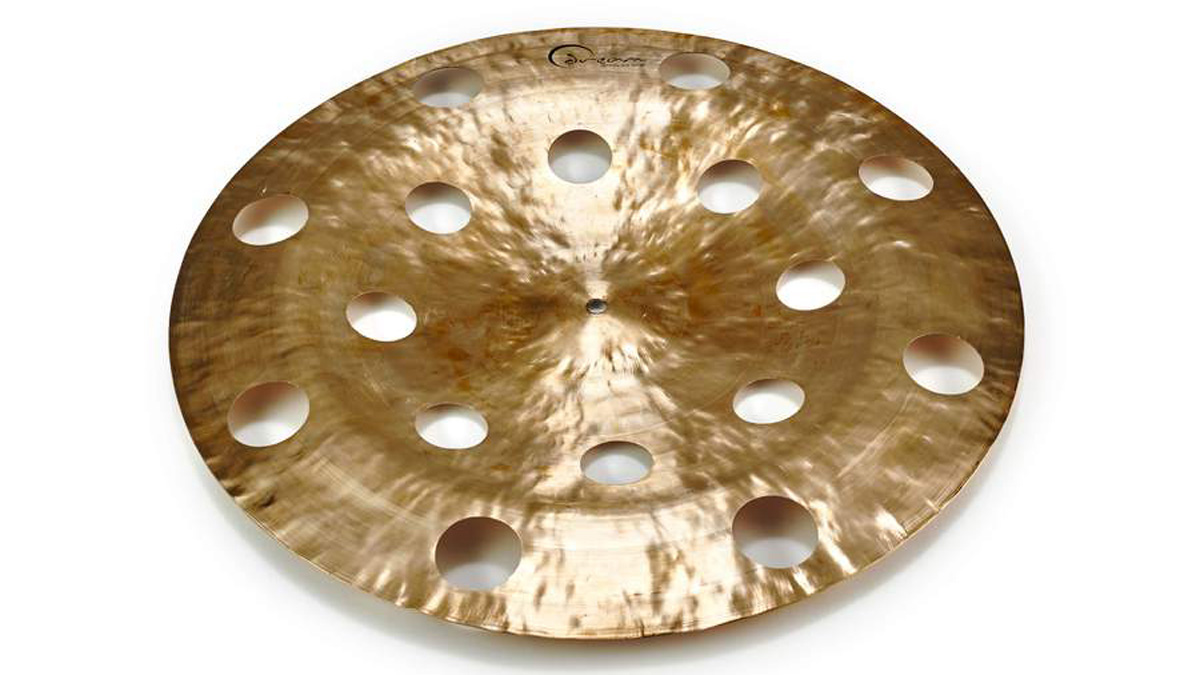MusicRadar Verdict
While this is without doubt an effects/add-on cymbal, it’s one that is versatile and can be played at different dynamic levels. From the very quiet to the way-too-loud, its response is both musical and usable.
Pros
- +
Great value.
Cons
- -
Won’t suit all styles.
MusicRadar's got your back
Chinese brand Dream has been making cymbals and gongs in its Wuhan factory for generations (in a region where cymbal smithery has been in existence for thousands of years).
However, it’s only as recently as 2005 that the company’s handmade instruments have become available internationally.
Build
Up for review is a Dream 22" Vented Pang first glimpsed at PASIC 2017. Pangs are a unique hybrid - part China, part ride, part something else altogether - and are usually trashy and exotic but capable of a wide range of expression. Dream took its largest Pang and experimented with cutting holes in it following artist and customer requests. After nearly 10 prototype versions the final 16-hole design seen here was settled on.
Like all Dream cymbals, the Pang is individually cast from B20 bronze and almost completely handworked, with the only mechanised intervention being the hole-cutting process. The cymbal has a typically small, inverted bell and a large upturned flange; it’s also pretty thin and weighs less than 2kg.
The holes are arranged in two bands - eight smaller holes are circled around the mid-section of the cymbal while an octet of slightly larger vents has been punched out of the flange. Despite the presence of so much thin air there is still plenty of intact bronze left to lay a stick on.
Hands on
The first touch reveals a warm, dark, fizzing but controllable cymbal. Gentle riding is rewarded with a clear ‘tah’ stick sound and supportive wash; moving closer to the edge finds the sound loosening up and the wash gradually increasing making it more like a crash/ride, albeit with China-like tonality.
While it’s trashy, it’s not overly aggressive... until hit sharply. Here, it reveals another side to its character altogether, exploding into life with an angry blast - the force is such that you can almost feel the movement of air rushing towards you, like a tube train emerging from its tunnel. The attack quickly subsides into beautifully tangled decay in which competing overtones crackle around the holes. Mallets, meanwhile, bring a positively gong-like response, which uncovers different shades of nuance with each turn.
Want all the hottest music and gear news, reviews, deals, features and more, direct to your inbox? Sign up here.
